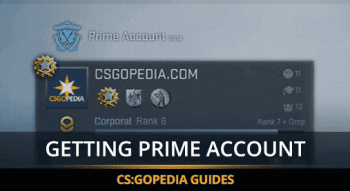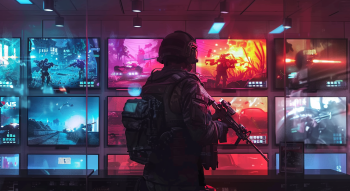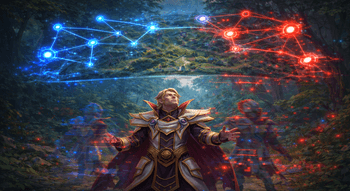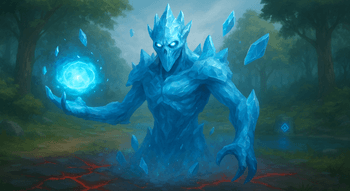CS2 Spray Patterns & Recoil Compensation for All Guns
Contents
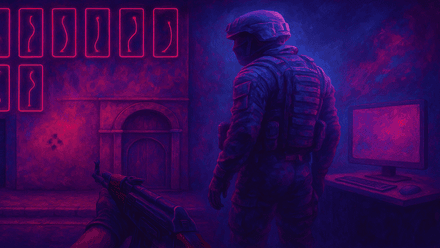
CS2 is a complex game filled with numerous mechanics and advanced tactics that players can exploit. To excel, it’s crucial to know how to counter strafe in CS2, use cover properly, apply different shooting techniques, and master CS2 spray patterns for sharper aim when firing. Regardless of your level of competition, mastering these skills should be a goal for continuous improvement.
In this article, we'll focus exclusively on what you should know to enhance spray control by understanding all CS2 gun spray patterns. Both pros and amateurs should refine their shooting techniques with various weapons to maximize battlefield efficiency. Although each popular CS2 gun has a unique spray pattern, knowing the theory can significantly help achieve better results.
First, it’s essential to have an understanding of why spray patterns in Counter-Strike 2 exist and how to compensate for them to achieve more precise shooting. You’ve probably heard that most weapons have a particular spray pattern in CS2. This means that each time you pull the trigger on your rifle without moving the gun, subsequent bullets will follow in the predicted direction, creating a similar pattern each time you shoot from the same gun. This spray pattern adds realism to the game by accounting for natural deviations caused by recoil and inaccuracy. It’s also worth noting that some weapons with a long reload time between the bullets, like AWP, SSG 08, or Revolver, aren’t impacted by recoil and thus don’t have a spray pattern.
Why Is It Important to Know Spay and Recoil Weapon Patterns, and How Can It Help?
Learning spray patterns in CS2 can help you train your recoil compensation behavior. Recoil compensation is the method of approximate algorithm on how you should move your crosshair so your bullets will fly with a much smaller deviation from the needed point. Our CS2 loadout guide will help you choose the best weapon for recoil training.
Each CS2 spray pattern has a responsive recoil compensation, which actually mirrors bullet deviation. Some players can intuitively look at the gun’s spray pattern and imagine how to move their crosshairs for more precise shooting, while others need to study the recoil compensation pattern. Let’s review both patterns for all guns in the game so you can use the best weapons in CS2 more effectively and reach a higher rank in matchmaking.
Spray and Recoil Patterns for CS2 Pistols
Each gun in Counter-Strike 2 has its own unique spray pattern. A common behavior of bullets for the majority of CS2 weapon spray patterns is to climb vertically up at the beginning and then spread to the side. While it’s hard to say that shooting from pistols is close to spraying, if you pull the trigger as often as possible, recoil will start to affect the accuracy.
Glock-18
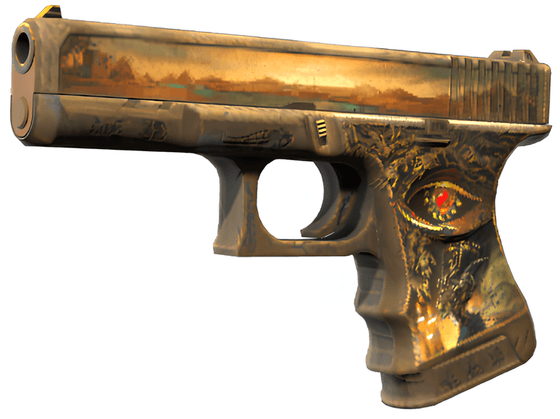
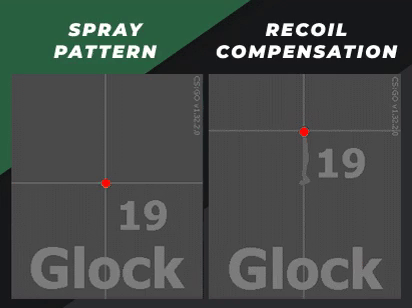
The spray pattern for Glock-18 demonstrates why this pistol has remained a favorite from CS:GO to CS2. The bullets tend to go slightly upward with minimal lateral deviation, providing good accuracy at long distances and while running. This makes the Glock-18 a precise and easy-to-shoot pistol.
USP-S
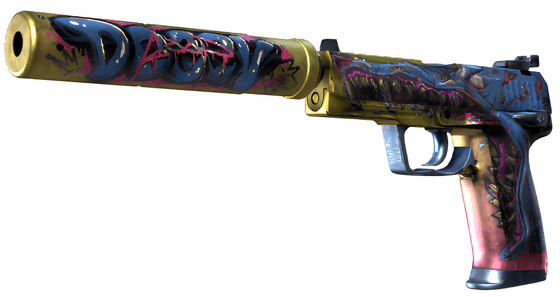
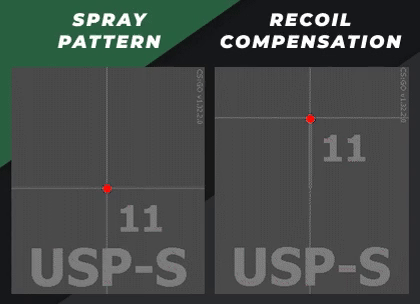
Another popular free weapon is the USP-S. Its nearly vertical spray pattern makes it easy to control and use the pistol effectively in skirmishes. With an impressive distance accuracy and the ability to one-shot enemies without helmets, it becomes a deadly weapon in skilled hands.
P2000
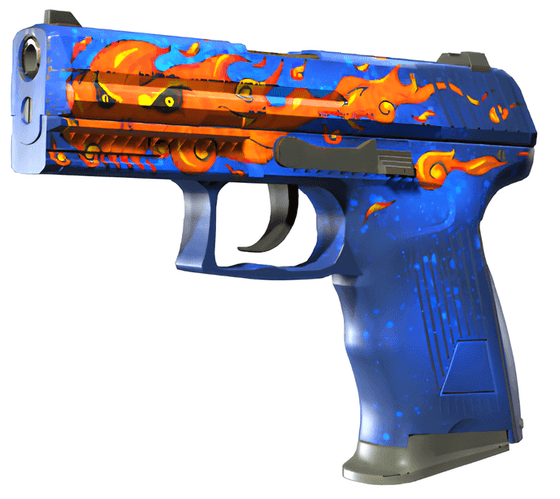
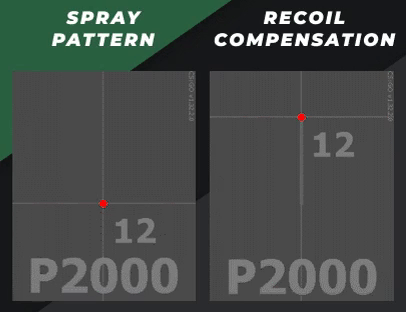
The P2000 bullet spray is quite similar to the USP-S, featuring a simple vertical pattern. Some players prefer the P2000 over the USP-S because it has one extra bullet in the magazine and a larger ammo reserve, making it ideal for spamming and spraying.
Desert Eagle
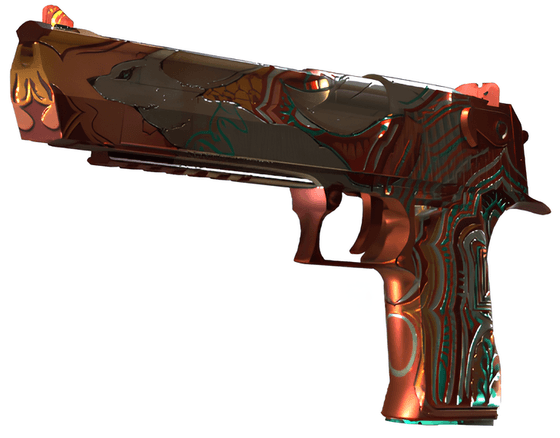
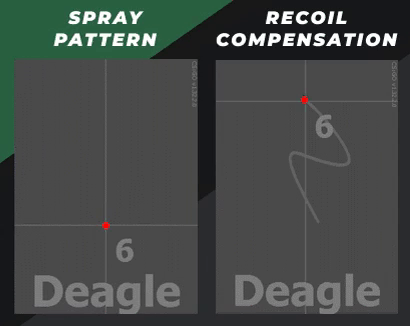
The Deagle is famous for its one-shot power at any range, capable of taking down even helmeted opponents. While discussing recoil patterns in CS2 for the Desert Eagle at long distances isn’t particularly useful, it does make sense to remember its unique shooting pattern at close range. Most skilled players, however, opt for one-taps with deliberate pauses, prioritizing accuracy over speed.
P250
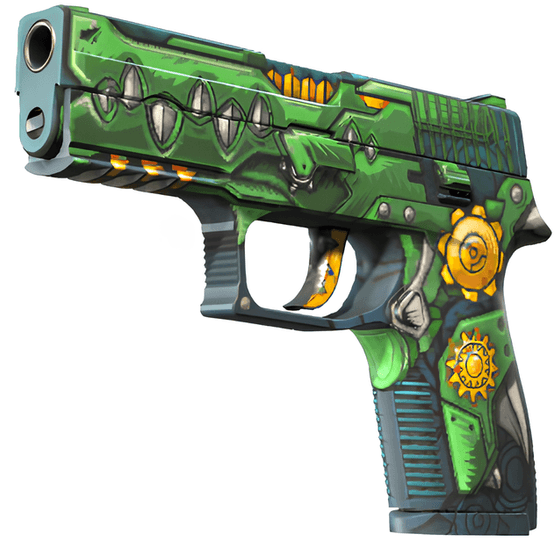
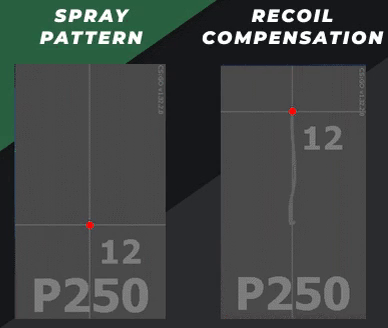
P250, available for just $300, is the cheapest pistol for both sides, yet it remains a dangerous weapon. Its accuracy and spray pattern are similar to USP-S, making it easy to get the hang of. Plus, it’s better armor penetration can cause plenty of problems even for helmeted enemies.
Tec-9
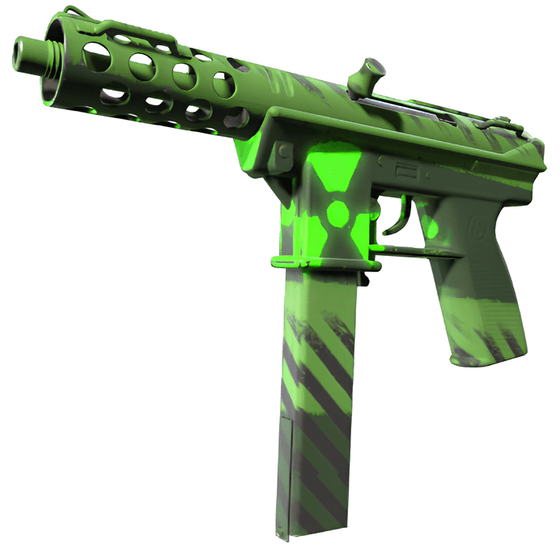

The Tec-9 has one of the trickiest CS spray patterns, manageable only for the first few bullets. Often seen as a close-range weapon for rushes, players try to control it based on their intuition rather than mastering how to improve its spray or recoil pattern.
Five-Seven
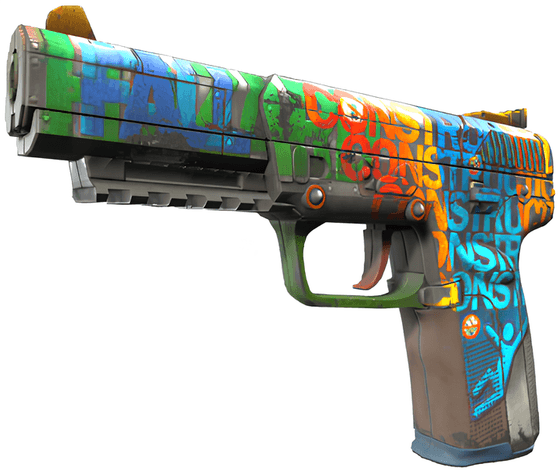
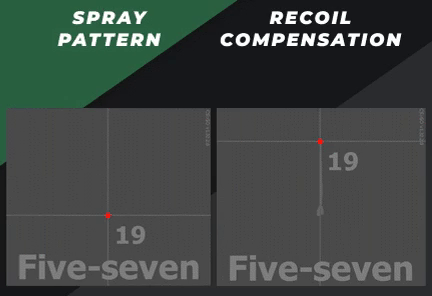
The Five-Seven has a spray pattern similar to the USP-S and P250, but its slightly lower RPM makes it easier to control. This helps players manage recoil better, and its high damage, along with the potential for a one-shot headshot at close range even against helmets, makes it a popular choice for CTs.
CS75-Auto
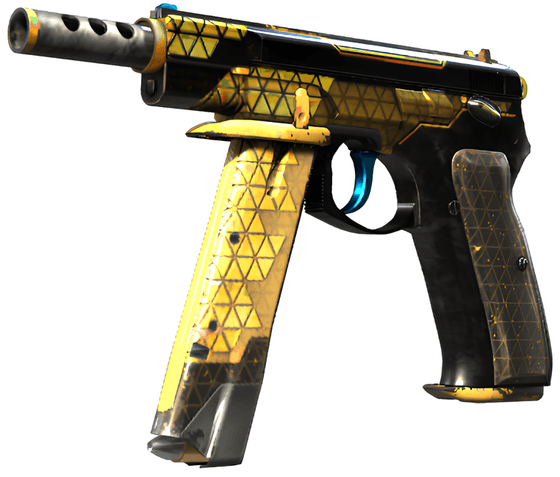

The CZ75-Auto, often dubbed a “pistol-rifle” is an underrated weapon. With its high fire rate, it can swiftly eliminate an enemy at close range. Moreover, its spray pattern isn’t overly challenging to manage, even without extensive training sessions.
Dual Berettas
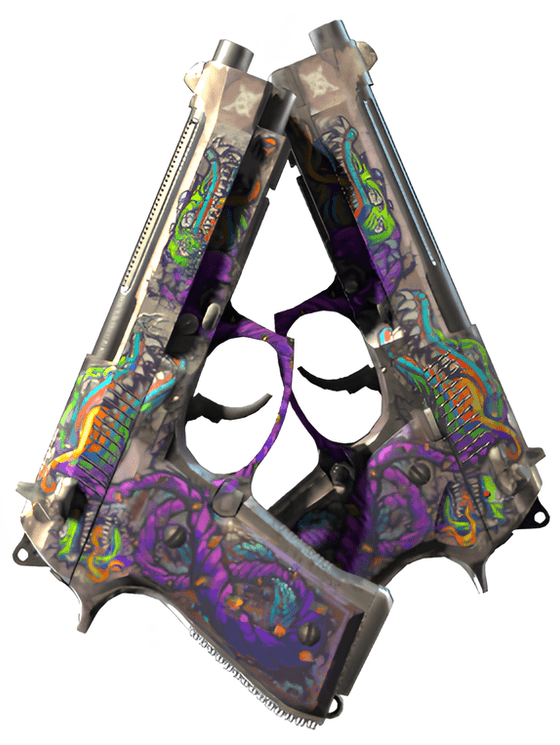
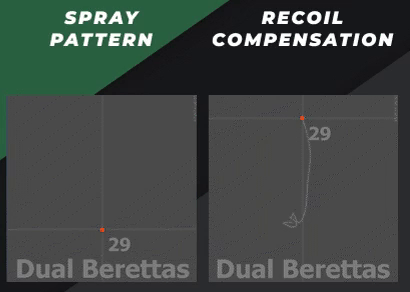
The Dual Berettas boasts one of the most intriguing CS2 gun recoil patterns. The initial stage is quite similar to other pistols, with a near-vertical bullet trajectory. However, the subsequent stage of the continuous fire surprisingly forms a tightly grouped cluster. Consequently, it’s a popular choice for spamming rather than tapping during pistol rounds.
Spray and Recoil Patterns for CS2 Rifles
Moving on to the rifles, their spray patterns appear largely similar across the board, except for sniper rifles. While some exhibit distinct patterns, let’s delve into each one meticulously to discern the subtle divergences in recoil compensation.
AK-47
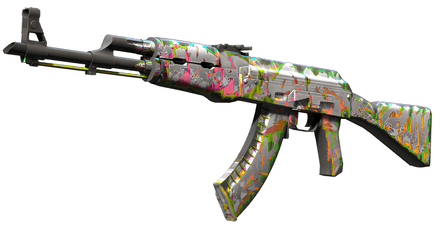
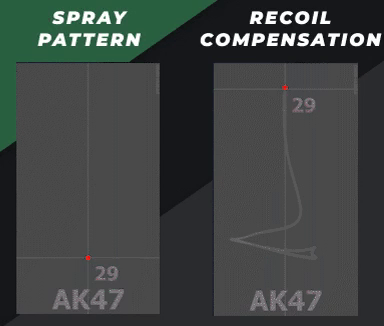
In the realm of rifles, the CS2 AK spray pattern embodies a timeless classic. Initially, the trajectory of the first few bullets ascends vertically, followed by a gradual leftward shift, marked by a sudden change in direction while minimizing significant vertical fluctuations. In practical terms, gamers should adopt an opposite approach, with the AK recoil pattern dictating a downward movement of the crosshair, followed by horizontal shifts. Initially, these shifts veer leftward before reversing course, accompanied by a slight vertical deviation.
Galil-AR
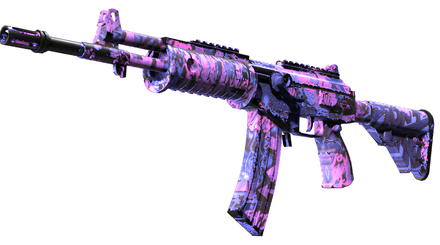
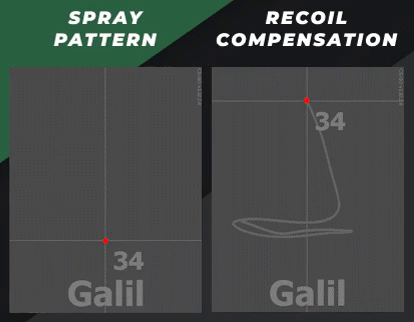
The Galil’s spray pattern mirrors its Kalashnikov counterpart, featuring a vertical climb to the left, albeit with narrower bullet spacing. However, the peak point entails two directional shifts instead of one. Nevertheless, the Galil spray pattern is deemed more manageable than the AK’s, as it doesn’t ascend as high. Maintaining the requisite height is prioritized over precise horizontal alignment.
M4A4
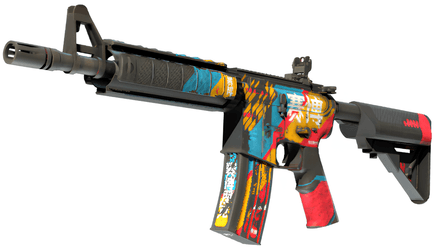
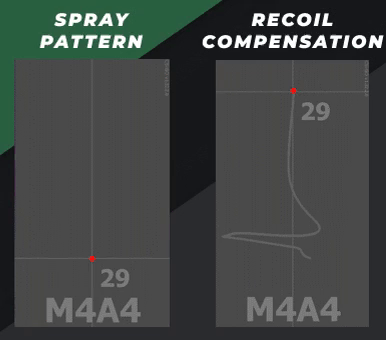
Another sample rifle, the M4A4 boasts a spray pattern quite akin to its counterparts, albeit with a slight deviation. It veers slightly to the right before shifting left and then going back to the right at its apex. Unlike AK’s trajectory, it doesn’t ascend as high and bears a resemblance to the Galil’s pattern. Notably, it omits the third reverse horizontal shift present the weaker assault rifle.
M4A1-S
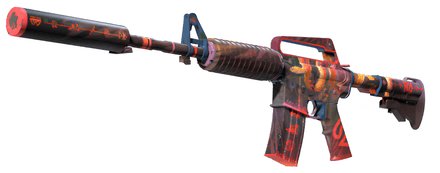
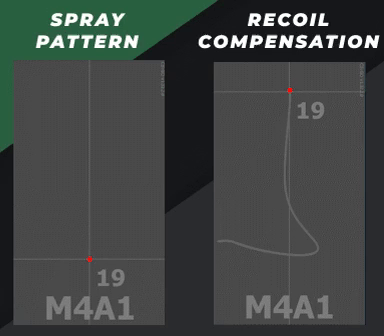
The M4A1 spray pattern bears the marks of its suppressor and limited magazine capacity of only 20 bullets. The initial six bullets ascend almost perfectly before making a standard rifle maneuver — veering left before turning to the right.
FAMAS
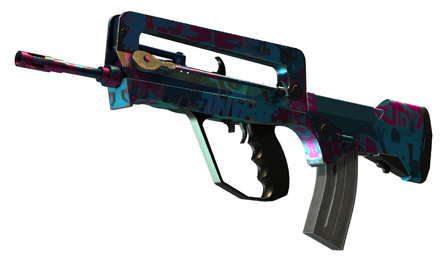
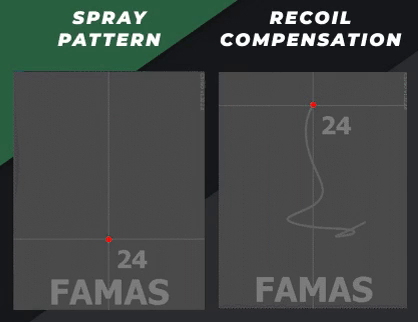
With just 25 bullets in the magazine, mastering the FAMAS spray pattern and recoil compensation can pose a challenge. Initially, only the first three bullets exhibit a slight deviation, followed by a shift to the right and then to the left, changing the direction once again. Of course, as the spray reaches its peak, bullets sway more widely, making long-distance control challenging. However, opting for spraying and spamming is far more effective than resorting to bursts, which have been absolutely ineffective since the CS:GO era.
AUG
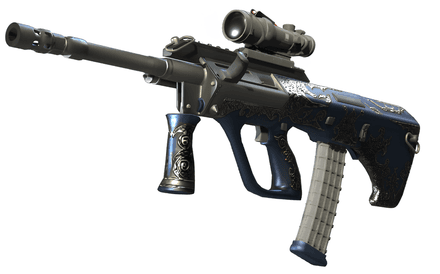
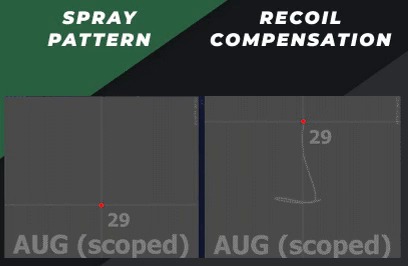
The AUG spray pattern closely resembles that of the M4A4, exhibiting a similar tendency to the bullets’ behavior during firing. With a 30-bullet magazine, a traditional crosshair movement at the zenith to the left and then returning to the right makes it pretty easy to remember how to shoot from the AUG. It’s worth noting that both scoped and unscoped AUGs share a similar shooting pattern, which is simply not as much deviated with the scope.
SG 553
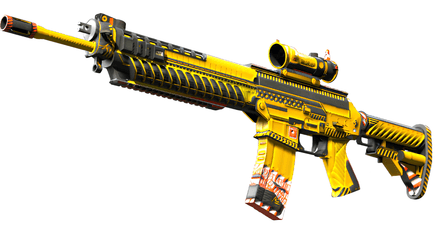
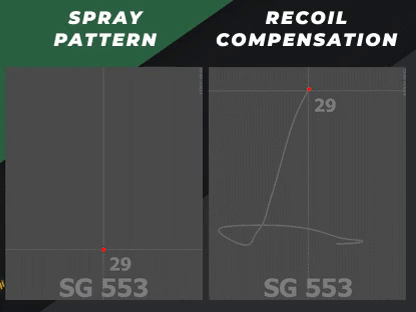
The recoil compensation for the SG 553 resembles the Greek letter, “alpha,” with bullets following a pretty straightforward path towards the upper right corner before transitioning into a horizontal movement during sustained shooting.
G3SG1
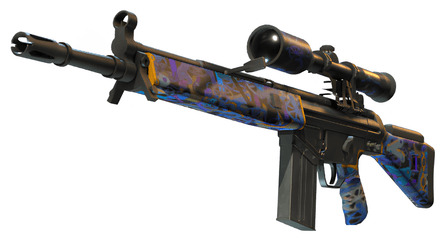
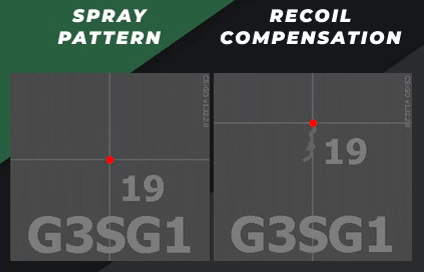
It’s hard to find a real in-game scenario of spraying from G3SG1 without a scope, but it’s surprisingly easy as this sniper gun has one of the easiest CS2 recoil patterns. The bullets of the G3SG1 tend to climb slightly vertical during shooting, eliminating the need for unscoping or pauses, unlike the AWP and Scout.
SCAR-20
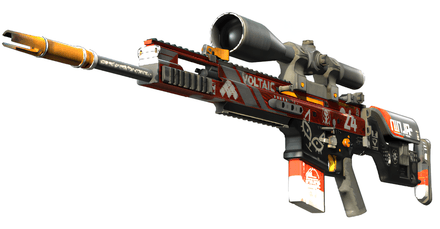
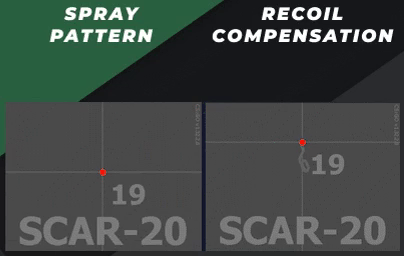
The CT counterpart of the auto-sniper rifle, the SCAR-20, has almost identical bullet behavior when spraying — only minor vertical and horizontal deviations are noticeable. However, it’s advisable to aim for the chest or pelvis during a potential massive rush on the position to ensure accurate shots, rather than aiming for the head.
Spray and Recoil Patterns for CS2 SMGs
With the arrival of slight shooting changes for the SMGs since the CS:GO era, learning CS2 gun spray patterns for this class of weapon is quite beneficial. Many players opt for submachine guns during eco rounds or fast pushes due to their advantages even compared to rifles. That is why learning how to shoot in CS2 more accurately from SMGs is practical, considering each SMG has unique spraying and recoil patterns.
MAC-10
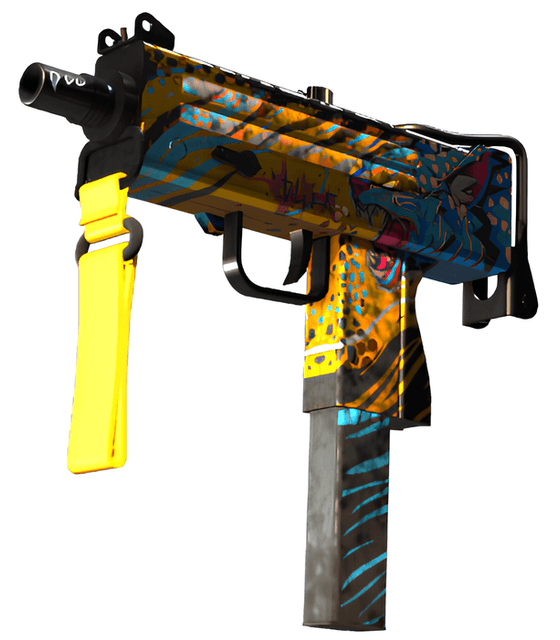
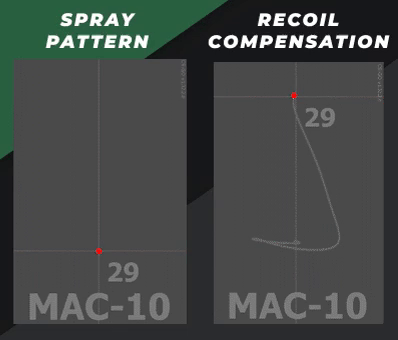
Although SMGs are typically associated with close-range combat, the MAC-10 spray pattern exhibits a shooting behavior reminiscent of rifles. Approximately half of the initial bullets veer towards the upper left upper corner before transitioning into horizontal movement to the right, with the last five bullets returning to the left.
MP9
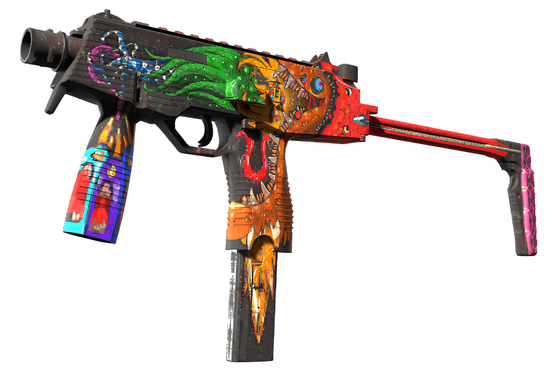
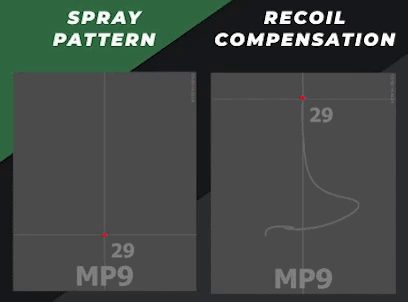
MP9 shows a slightly more precise spray pattern compared to MAC-10, albeit with a similar overall appearance. However, this weapon's primary advantage is the accuracy of the initial bullets and its high fire rate, making it quite formidable at close ranges.
MP7
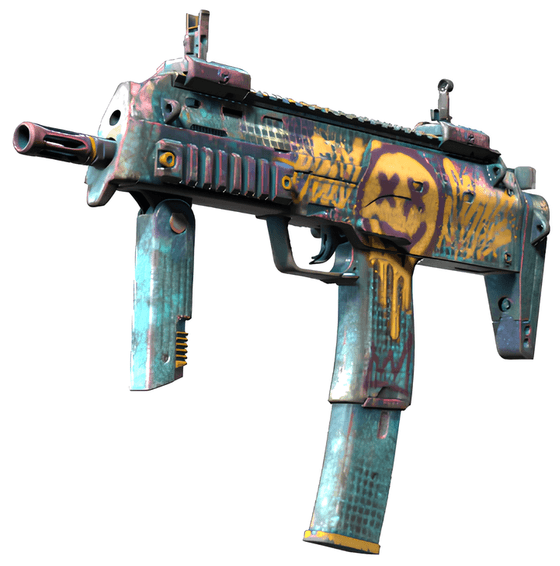
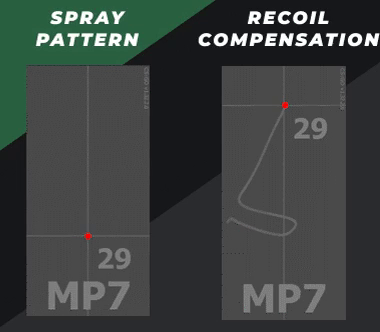
Mastering recoil compensation for MP7's pattern can be challenging. Of course, the initial ten bullets follow a predictable path to the upper right corner before shifting to the left, but vertical deviations closer to the peak add an extra layer of difficulty in control.
P90
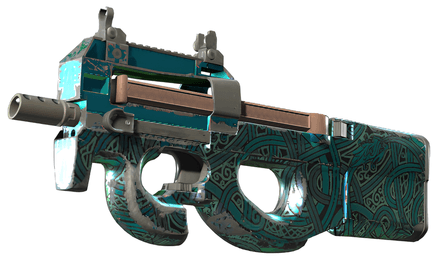
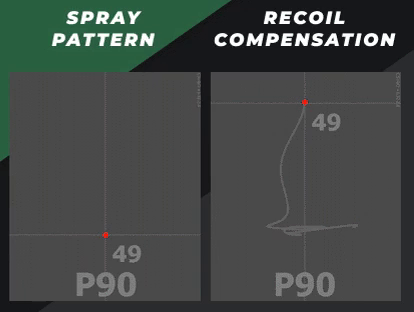
Having 50 bullets in the magazine is a real boon for spraying, though the first 15 rounds of the P90 travel close to the center and vertically, reminiscent of the M4A1-S recoil pattern. However, the remaining dozen rounds show tightly grouped vertical deviations, with bullets moving solely from left to right, with multiple side direction changes along the way.
PP-Bizon
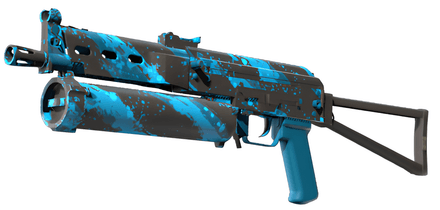
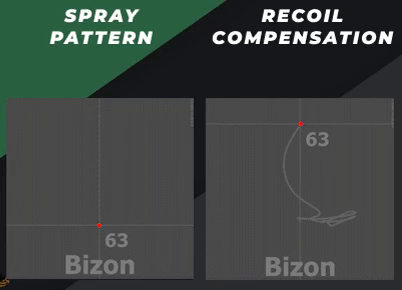
We are not sure that someone will master the recoil compensation for PP-Bizon as it can be rarely seen in Competitive Matchmaking. Still, when the initial arc nears its peak, sideway deviations start a chaotic move from right to left, with multiple switches. However, surviving after firing the first dozen bullets requires luck due to the relatively low damage inflicted on opponents.
UMP-45
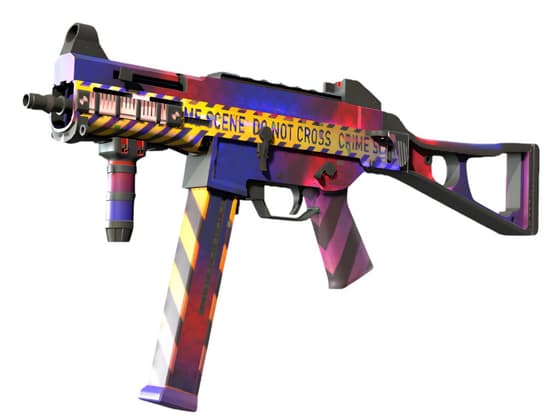
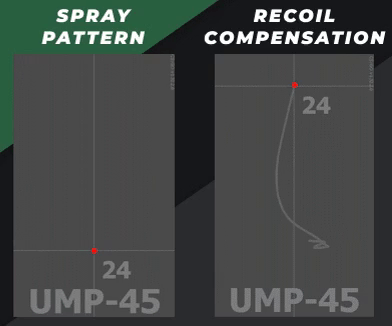
The shooting deviations for UMP-45 are perhaps the simplest among all CS2 spray patterns in the SMG class, with no sudden movements or changes in direction. Bullets travel vertically with a slight emphasis to the right before turning left and nearly stopping all deviations at the peak.
Spray and Recoil Patterns of CS2 Heavy Weapons
The heavy weapons category can be virtually divided into two, separating shotguns and machine guns, which represent two diverse classes of weapons on the battlefield. Machine guns were designed specifically for spraying and have magazines with 100+ bullets, while shotguns are slow-shooting weapons that use buckshot to deliver damage.
M249
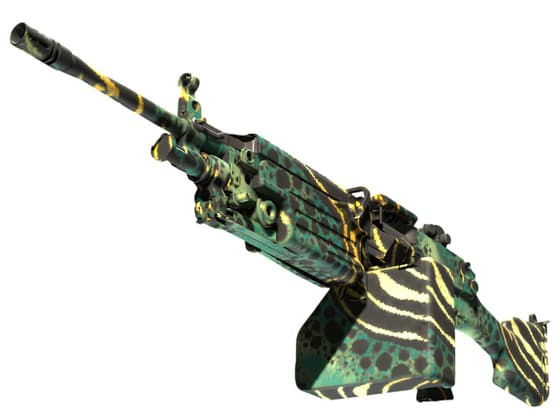
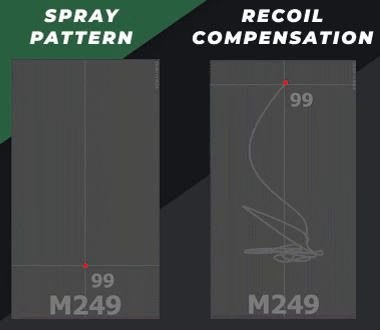
Naturally, real-life machine guns served as the prototype for the M249, and its spray pattern is no exception to its size. The initial ten bullets primarily exhibit a vertical movement, followed by the remaining ones sliding from left to right and vice versa, with a slight 45-degree shift closer to the end of the magazine. However, it’s always crucial to orient yourself on the trajectory, prioritizing where to position the crosshair.
Negev
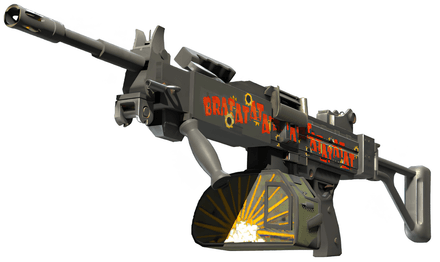
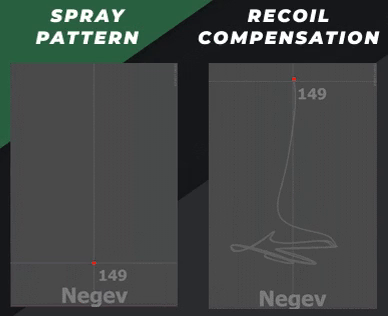
You can actually skip learning the Negev spray pattern altogether, as every bullet is visible. This allows you to aim using tracers instead of relying solely on the crosshair. Additionally, you can also use a unique or customized crosshair with a specific size or color, which you can easily generate with our CS crosshair generator. This will improve the visibility of bullets even more.
XM1014
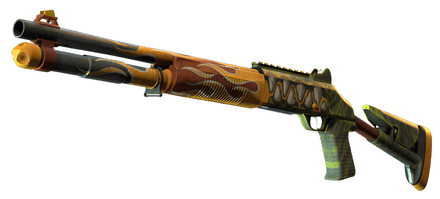
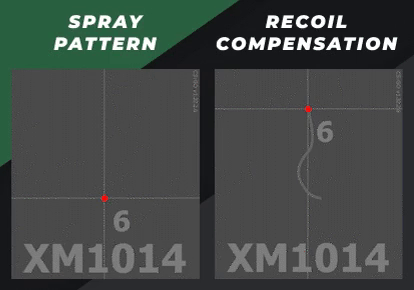
With the fastest fire rate among shotguns, the XM1014 exhibits a shooting pattern influenced by recoil. Consequently, each successive buckshot rises higher and deviates slightly from the left to the right before returning to the left.
Sawed-Off
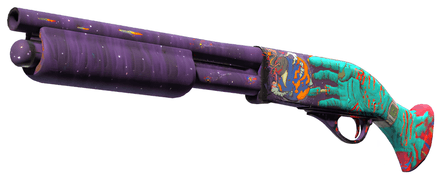
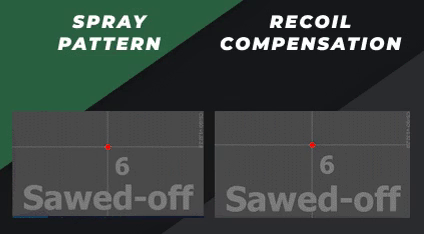
Nova
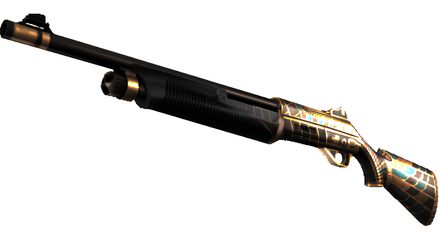
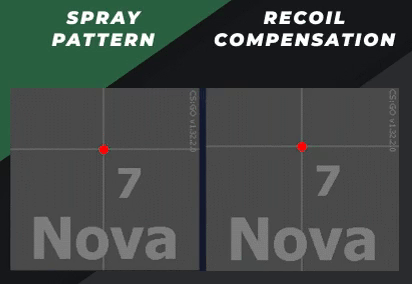
MAG-7
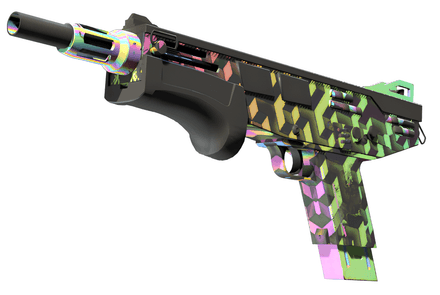
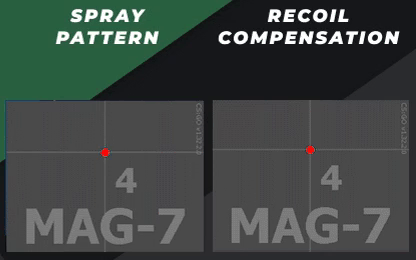
All the remaining shotguns could be grouped together as they share the same spray patterns and recoil compensation. Their relatively slow fire rate allows for automatic recoil compensation between the shots, resulting in precise shooting.
Conclusion
Now that you’re familiar with the spray patterns and responsive recoil compensation behavior for all CS2 weapons, the main tip is to practice with only those guns that you use or prefer the most. Additionally, consider adopting a one-tapping approach if you’re unsure about the spraying pattern.
![How to Change Your Crosshair in CS:GO [Guide] + Commands](https://profilerr.net/static/content/thumbs/350x191/3/6c/hrryxb---c350x191x50px50p--68736d6dad51d00d48e36acf0f98e6c3.png)

